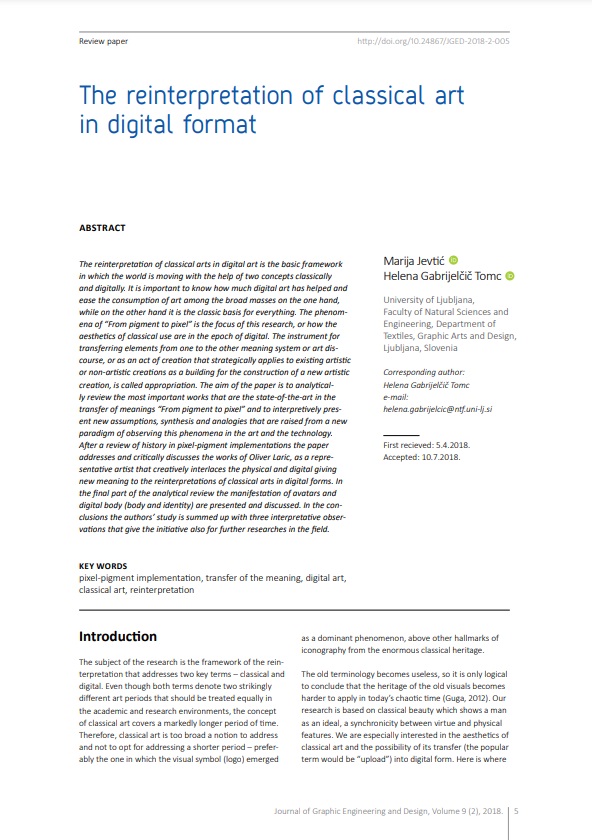
Published 2018-12-01
abstract views: 363 // Full text article (PDF): 875
Keywords
- pixel-pigment implementation,
- transfer of the meaning,
- digital art,
- classical art,
- reinterpretation
How to Cite
Copyright (c) 2018 © 2018 Authors. Published by the University of Novi Sad, Faculty of Technical Sciences, Department of Graphic Engineering and Design. This article is an open access article distributed under the terms and conditions of the Creative Commons Attribution license 3.0 Serbia.

This work is licensed under a Creative Commons Attribution 3.0 Unported License.
Abstract
-
The reinterpretation of classical arts in digital art is the basic framework in which the world is moving with the help of two concepts classically and digitally. It is important to know how much digital art has helped and ease the consumption of art among the broad masses on the one hand, while on the other hand it is the classic basis for everything. The phenomena of “From pigment to pixel” is the focus of this research, or how the aesthetics of classical use are in the epoch of digital. The instrument for transferring elements from one to the other meaning system or art discourse, or as an act of creation that strategically applies to existing artistic or non-artistic creations as a building for the construction of a new artistic creation, is called appropriation. The aim of the paper is to analytically review the most important works that are the state-of-the-art in the transfer of meanings “From pigment to pixel” and to interpretively present new assumptions, synthesis and analogies that are raised from a new paradigm of observing this phenomena in the art and the technology. After a review of history in pixel-pigment implementations the paper addresses and critically discusses the works of Oliver Laric, as a representative artist that creatively interlaces the physical and digital giving new meaning to the reinterpretations of classical arts in digital forms. In the final part of the analytical review the manifestation of avatars and digital body (body and identity) are presented and discussed. In the conclusions the authors’ study is summed up with three interpretative observations that give the initiative also for further researches in the field.


